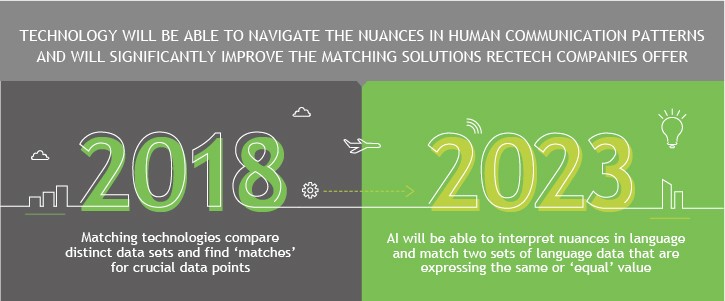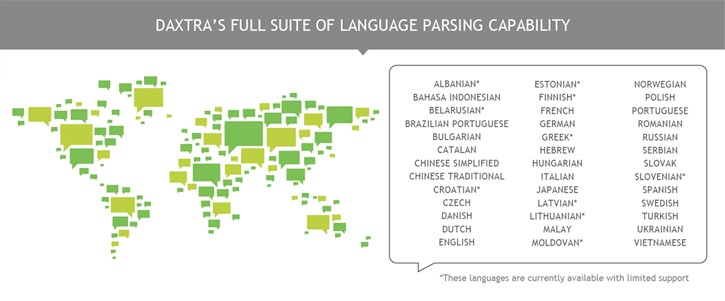By Andrei Mikheev, CEO DaXtra Technologies
2018 is well underway and the pace of life and work in the digital economy continues to accelerate.
We are all familiar with the major themes of the day: China’s continued rise; the shifting of trading relationships following political changes in the United States and Europe; and technology’s encroachment upon nearly every industry, from finance to medicine to marketing.
So, what technological advances in the recruitment industry can we expect in 2018? How will companies like DaXtra help recruiters and candidates navigate the labour market in today’s rapidly evolving digital economy?
Given that this is intended to be a digestible summary of the year ahead, let me break the discussion down into three, easily identifiable topic categories: (1) technological innovation, (2) demographics and (3) regulation.
I. The Holy Grail: Matching Linguistic Nuances
On the innovation side we can expect a deeper commitment to improve recruitment technology – or, RecTech - AI, especially in the area of matching technology and big data analysis for a range of Asian languages.
For those who may need a refresher: matching technologies compare distinct data sets and find ‘matches’ for crucial data points.
With regards to RecTech, matching technology pairs suitable candidates with suitable vacancies. Using this technology, recruiters should be able to quickly find the 10 best candidates to fill a vacancy shortlist. Also, while looking at one particular candidate, recruiters should be able to find “more like him or her”. Although this functionality already exists, there are a number of not-so-obvious challenges that currently hinder the technology from delivering a 100 percent accuracy rate.
Why is that? For starters, recruiters currently need to parse both vacancies and resumes into a structured format so the computer “knows” the most important competencies, levels of experience and other attributes on which it calculates the matching score. This is a problem because an electronic text is just a sequence of characters for computers. But parsing texts into a “comprehension” structure is another level entirely – and that is why it is one of DaXtra’s key focus areas.
In addition, the language used in resumes and in vacancies varies widely. For instance, a candidate usually states his or her degree in an exact form (e.g. “MBA”). But in a job ad, education requirements will most likely be described in broader terms e.g. -- “must have a university degree in business related subjects.”
 Where linguistic matching technology is today vs. where it should be in 5 years’ time
Where linguistic matching technology is today vs. where it should be in 5 years’ timeDeveloping the kind of software that intuitively comprehends the most important competencies in a string of text is less of an engineering problem, and more of a scientific challenge: before writing a software code we need to build a proper methodology which can address these problems.
Nevertheless, the ability for computer systems to read nuances in language (and indeed not just in English but in Chinese, Japanese, Korean and other languages) is a major focus -- and 2018 is a year in which DaXtra intends to make further strides in this area.
II. Developed Markets Still in the Driver’s Seat – But Not For Long
Because DaXtra’s intelligent software is most efficiently used when linked to internal recruitment databases, it is important to analyse the impact of recruitment technology adoption in the Asian region.
In short, it’s certainly true that developing recruitment markets such as China and India are evolving rapidly, sometimes much quicker than developed markets – especially in terms of AI and machine learning.
At the same time, the US and Europe are still ahead when it comes to utilising ‘applicant tracking systems’ (ATS) and ‘recruitment management systems’ (RMS) in the hiring process. Such systems provide the crucial infrastructure based on a solid foundation of a recruitment database that makes it possible to bolt on and absorb new technologies. That is, unless you have a solid recruitment platform, it is very difficult to take advantage of new developments that streamline the recruitment process.
At DaXtra we are very excited by the fact that the rest of the world is catching up with the US and Europe in this regard. Several technological partners which supply recruitment platforms in the US and Europe are already very active in the Asian region, where we see a trend in shifting from excel spreadsheets to proper candidate-management databases.
For that reason, we are investing heavily in Asia. In 2017, we opened offices in the Asia Pacific’s most advanced markets, Japan and Australia – and we’ve run our Asia business from Hong Kong for the past five years. We also offer capability in regional languages such as Chinese, Japanese, Korean, Thai, Vietnamese – and we are constantly working on improving the quality of parsing as well as adding new regional languages all of the time.

To be sure, one of the major challenges facing Asia is the region’s linguistic diversity. Take Japanese and Korean, for example. They are two very different languages – each with their own complex structures and writing systems. Developments in machine learning and especially in text analysis software need to evolve to perfectly address the nuances expressed in Asia’s major languages.
Have no fear – we’ll get there. It won’t be long, perhaps only a few short years, before China and India are utilising the latest recruitment technologies, and are driving RecTech development right along with the US and Europe.
III. More Technology – And More Demands For Privacy
Lastly is the issue of privacy – and its counterpart, regulation.
Whether we like it or not, advancements in machine learning are still scary to many people. Fears of a Matrix-style takeover are never far from the hive mind – and those fears are unlikely to disappear anytime soon.
In many ways, that’s why we are seeing new regulations such as the EU’s General Data Protection Regulation (GDPR), which will have a huge impact on recruitment going forward.
At DaXtra we take GDPR, and other privacy regulations, very seriously. We employ a dedicated compliance officer to work with our cyber security team and legal advisers on this matter, so that when a new client chooses our solutions, they can be confident they are already covered.
In 2018 and the years ahead, there will be a constant tug-of-war between the two impulses – on one hand, a desire for more effective and efficient technologies; on the other, more vocal concerns about data privacy.
As always, achieving the perfect balance requires cooperation between technologists, governments and regulators.
We certainly have our work cut out for us in 2018. But given the exciting diversity of the Asian region, solid prospects for AI-driven software, and the rapid rise of Asia both in economic and technological aspects, it feels like the RecTech journey is only beginning.


